Tasting Group: Mourvèdre from Anywhere
By Kori ~ November 2nd, 2010
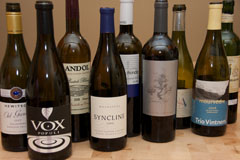 Since we live in Washington State and often drink wines from Washington State, we want to make sure that we continue to hone our knowledge of the entire world of wine and maintain well-rounded palates in order to make us even more objective when we evaluate wines from Washington State. Therefore, we are thoroughly enjoying our Wine Peeps Tasting Group which includes what we think is an excellent peer group of knowledgeable wine lovers to taste, share, and learn more about wine together. Unlike our monthly wine tasting dinners in which the guests rotate, this tasting group includes people who are committed to getting together once a month which we believe benefits all of us. In addition to trying varieties and regions that we do not taste frequently, the other main difference between this group and our wine tasting dinners is that each group member brings a bottle consistent with the month’s theme so no one knows all the wines in the blind tasting.
Since we live in Washington State and often drink wines from Washington State, we want to make sure that we continue to hone our knowledge of the entire world of wine and maintain well-rounded palates in order to make us even more objective when we evaluate wines from Washington State. Therefore, we are thoroughly enjoying our Wine Peeps Tasting Group which includes what we think is an excellent peer group of knowledgeable wine lovers to taste, share, and learn more about wine together. Unlike our monthly wine tasting dinners in which the guests rotate, this tasting group includes people who are committed to getting together once a month which we believe benefits all of us. In addition to trying varieties and regions that we do not taste frequently, the other main difference between this group and our wine tasting dinners is that each group member brings a bottle consistent with the month’s theme so no one knows all the wines in the blind tasting.
Last week, we met and explored Mourvèdre. Unlike our previous tasting group meetings, which have focused on a particular varietal from a specific region, this tasting simply focused on the varietal and each group member was free to bring a bottle of Mourvèdre from any region in the world. The only requirement was that it was either varietally-labeled as Mourvèdre (or a Mourvèdre synonym such as Mataro or Monastrell) or, for countries that do not varietally-label, it must contain at least 75% Mourvèdre. Mourvèdre is a late-ripening variety that often produces tannic, high alcohol wines that are characterized by aromas and flavors of game, earth, and red fruits. It is often used as a blending grape in Rhone-style wines, frequently with Grenache and Syrah.
We tasted nine bottles of Mourvèdre from around the world, and the consensus favorite was the 2008 Rasa Vineyards Vox Populi Mourvèdre from Washington State. I was glad to see this wine do well in the blind tasting because I had been particularly impressed with it on our recent visit to Rasa Vineyards in Walla Walla. The Mourvèdre that goes into Rasa’s Vox Populi was originally sourced to be a blending grape in their QED (a Syrah/Grenache/Mourvèdre blend). However, when some of their winemaker friends tasted barrel samples of it, they commented on how remarkable it was. Even some collectors who tasted it offered to buy it in futures and asked them to bottle at least some of it by itself. Therefore, Vox Populi or “voice of the people†was born.
Of the nine wines we tasted, three were from France, two were from Spain, one was from Australia, and three were from Washington State. I was especially excited to see how favorably the Washington wines performed against peers from around the world. The three wines from Washington State finished first, second, and fourth in the group consensus rankings.
From 1st to last in the group consensus rankings:
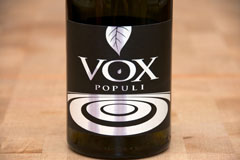 2008 Rasa Vineyards Vox Populi Mourvèdre (Minick Vineyard, Yakima Valley, Washington): 100% Mourvèdre. Deep, purplish ruby red. Gorgeous nose with red and black fruits, plum, raspberry, smoked meats, game, spice and white pepper on both the nose and palate. Medium to full-bodied with crisp acidity, medium to high drying tannins and a long finish. Big yet smooth and well-balanced.
2008 Rasa Vineyards Vox Populi Mourvèdre (Minick Vineyard, Yakima Valley, Washington): 100% Mourvèdre. Deep, purplish ruby red. Gorgeous nose with red and black fruits, plum, raspberry, smoked meats, game, spice and white pepper on both the nose and palate. Medium to full-bodied with crisp acidity, medium to high drying tannins and a long finish. Big yet smooth and well-balanced.
Quality: 4.5 stars (out of 5)
QPR: 4 bangs for your buck (out of 5)
Where to buy: Received as sample, suggested retail $45
2006 Syncline Mourvèdre (Coyote Canyon Vineyard, Horse Heaven Hills, Washington): 100% Mourvèdre. Deep, dark purplish red in color. Very aromatic with red fruits and spice on the nose. Game, earth, smoked meats, red fruits, and a hint of spice come through on the palate. Medium to full-bodied with very crisp acidity and medium to high, drying tannins. Well-balanced with a long finish.
Quality: 4 stars (out of 5)
QPR: 5 bangs for your buck (out of 5)
Where to buy: PCC Natural Market (Seattle, Washington), $22; Available elsewhere, $29
2008 Juan Gil Monastrell (Jumilla, Spain): 100% Monastrell. Deep, ruby red. Very aromatic with dusty, smoky, and black pepper aromas that lead to chalky flavors, ripe red fruits, meat, and a hint of coffee. Medium to full-bodied with crisp acidity, medium to high, drying tannins and a long finish.
Quality: 4 stars (out of 5)
QPR: 5 bangs for your buck (out of 5)
Where to buy: Esquin Wine Merchants (Seattle, Washington), $16; Available elsewhere, $10 to $19
2006 Trio Vintners Mourvèdre (den Hoed Vineyard, Yakima Valley, Washington): 96% Mourvèdre, 4% Syrah. Deep, dark purplish red. Nice nose with cinnamon, spice, and perfume on the nose. Game, ripe red fruits, and smoke come through on the palate. Medium to full-bodied with lively acidity, medium to high, drying tannins, and a long finish.
Quality: 4 stars (out of 5)
QPR: 5 bangs for your buck (out of 5)
Where to buy: Esquin Wine Merchants (Seattle, Washington), $20; Available elsewhere, $27
2007 Hewitson “Old Garden†Mourvèdre (Barossa Valley, Australia): Deep, ruby red. Aromatic with dirt, earth, and red fruits on the nose; earth and ripe red fruits on the palate. Medium-bodied with crisp acidity, medium tannins, and a long finish.
Quality: 3.5 stars (out of 5)
QPR: 1 bang for your buck (out of 5)
Where to buy: K&L Wine Merchants (California), $42; Available elsewhere, $33 to $42
2006 La Bastide Blanche Bandol Cuvée Estagnol (Bandol, Provence, France): Deep, dark ruby red. Peppermint, dirt, and earth on the nose lead to more earth and barnyard notes on the palate. Medium-bodied and lively with medium to high, slightly bitter, tannins, and a long finish.
Quality: 3.5 stars (out of 5)
QPR: 1 bang for your buck (out of 5)
Where to buy: Full Pull Wines (Seattle, Washington), $32; Available elsewhere, $30
2007 Viña Honda Monastrell (Jumilla, Spain): 100% Monastrell. Deep, ruby red in color. Nose is a bit tight at first, and then cardboard, oak, and cracked black pepper come through. Grapefruit rind, red plum, and chalky notes on the palate. Medium to full-bodied and tart with medium, drying tannins, and a long, somewhat bitter, finish. Very different profile than the others in the tasting.
Quality: 3 stars (out of 5)
QPR: 3 bangs for your buck (out of 5)
Where to buy: K&L Wine Merchants (California), $10; Available elsewhere, $10 to $14
2008 Domaine Astruc dA Mourvèdre (Vins de Pays du Languedoc, France): Deep, dark purplish red. Smoke, red fruits, game, and earth come through on both the nose and palate. Medium to full-bodied with crisp acidity, medium to high, drying tannins, and a long finish.
Quality: 3 stars (out of 5)
QPR: 3 bangs for your buck (out of 5)
Where to buy: Esquin Wine Merchants (Seattle, Washington), $10
2005 Chateau Pibarnon Bandol (Bandol, Provence, France): 90% Mourvedre. Deep, ruby red. Stinky cheese, expired milk, dirty diapers, and barnyard aromas lead to stinky cheese and rotten eggs on the palate. Medium to full-bodied with crisp acidity, medium to high, drying tannins, and a long finish. The aromas and flavors are not pleasant. Not sure if it’s just a flavor profile we don’t like or whether this bottle actually had a problem.
Quality: 2 stars (out of 5)
QPR: NR (not recommended)
Where to buy: K&L Wine Merchants (California), $40; Available elsewhere, $30 to $53
Filed under: American Wine, Australian Wine, Five-Bangs For Your Buck Wines, French Wine, Mourvedre, Red Wine, Spanish Wine, Tasting Group, Washington State Wine, Wines NOT To Buy (1 & 2 Star), Wines Over $25, Wines Under $10, Wines Under $15, Wines Under $20, Wines Under $25
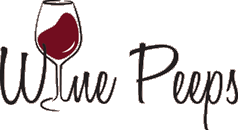
 Wine Peeps is an independent wine blog dedicated to helping you get the most bang for your buck in wine. We do this through blind tastings of wine from around the world and calculations of
Wine Peeps is an independent wine blog dedicated to helping you get the most bang for your buck in wine. We do this through blind tastings of wine from around the world and calculations of 


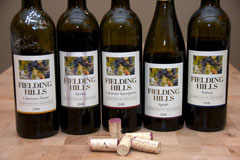
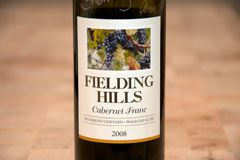 2008 Fielding Hills Cabernet Franc (Riverbend Vineyard, Wahluke Slope, Washington): Deep, dark red in color. Gorgeous nose with black fruit, floral, herbal, and a hint of bell pepper aromas. Luscious red and black fruits, black cherry, herbal notes, and a hint of earth come through on the palate. Medium to full-bodied with crisp acidity and drying tannins. Extremely well-balanced and smooth with good complexity and a very long, lingering finish. The best Cabernet Franc I’ve ever had. Wow!
2008 Fielding Hills Cabernet Franc (Riverbend Vineyard, Wahluke Slope, Washington): Deep, dark red in color. Gorgeous nose with black fruit, floral, herbal, and a hint of bell pepper aromas. Luscious red and black fruits, black cherry, herbal notes, and a hint of earth come through on the palate. Medium to full-bodied with crisp acidity and drying tannins. Extremely well-balanced and smooth with good complexity and a very long, lingering finish. The best Cabernet Franc I’ve ever had. Wow!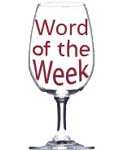 This week’s Wine Word of the Week is mercaptans.
This week’s Wine Word of the Week is mercaptans. As you might imagine, the first thing that attracted me to this book, Red, White, and Drunk All Over by Natalie MacLean, was its title. Then after perusing it at my local Barnes and Noble, the clincher for me was the tout on the inside back cover flap:
As you might imagine, the first thing that attracted me to this book, Red, White, and Drunk All Over by Natalie MacLean, was its title. Then after perusing it at my local Barnes and Noble, the clincher for me was the tout on the inside back cover flap: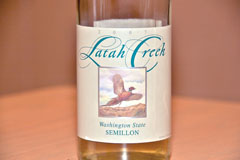 Would you like a quick suggestion for a good wine to drink tonight (or this weekend) that won’t break your budget and is widely available? Many of our readers have said this is something they would like, so here is this week’s selection, the 2007 Latah Creek Semillon from Washington State.
Would you like a quick suggestion for a good wine to drink tonight (or this weekend) that won’t break your budget and is widely available? Many of our readers have said this is something they would like, so here is this week’s selection, the 2007 Latah Creek Semillon from Washington State.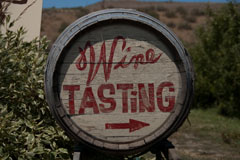 Wine is a beverage to be enjoyed, preferably in the company of friends. Unfortunately, though, many people find wine intimidating. For many, making it through the onslaught of bottles at the local grocery store or wine shop and actually choosing a bottle is just half the battle. Now, it’s time to drink it. If all you want to do is drink a glass of wine with dinner and not think about it, that is perfectly acceptable. However, if you would like to have an idea of what to look for in a wine to evaluate it and discuss it with others, here is a basic tasting methodology for you to follow or adapt to your own purposes. It is broken down into five steps (the 5 – S’s): See, Sniff, Sip, Spit or Swallow, and Summarize. Be sure to take good notes (mental or written) during each step.
Wine is a beverage to be enjoyed, preferably in the company of friends. Unfortunately, though, many people find wine intimidating. For many, making it through the onslaught of bottles at the local grocery store or wine shop and actually choosing a bottle is just half the battle. Now, it’s time to drink it. If all you want to do is drink a glass of wine with dinner and not think about it, that is perfectly acceptable. However, if you would like to have an idea of what to look for in a wine to evaluate it and discuss it with others, here is a basic tasting methodology for you to follow or adapt to your own purposes. It is broken down into five steps (the 5 – S’s): See, Sniff, Sip, Spit or Swallow, and Summarize. Be sure to take good notes (mental or written) during each step.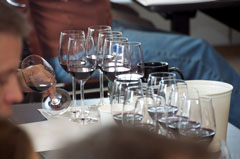 Take another sip and evaluate the acidity, tannins, and alcohol.
Take another sip and evaluate the acidity, tannins, and alcohol.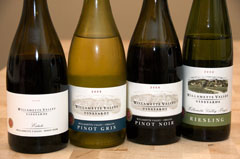 Jim Bernau founded
Jim Bernau founded 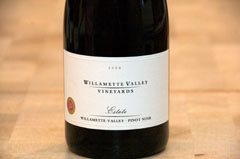 2008 Willamette Valley Vineyards Estate Pinot Noir (Willamette Valley, Oregon): Medium, ruby red in color. Beautiful bouquet with aromas of red cherry, earth, and oak. Red cherry, strawberry, dark chocolate, and a hint of smoke come through on the palate. Medium-bodied with crisp acidity and medium tannins. Well-balanced and smooth with a long, slightly spicy, finish.
2008 Willamette Valley Vineyards Estate Pinot Noir (Willamette Valley, Oregon): Medium, ruby red in color. Beautiful bouquet with aromas of red cherry, earth, and oak. Red cherry, strawberry, dark chocolate, and a hint of smoke come through on the palate. Medium-bodied with crisp acidity and medium tannins. Well-balanced and smooth with a long, slightly spicy, finish.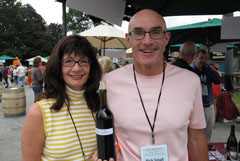 Darcey Fugman-Small and her husband Rick Small founded
Darcey Fugman-Small and her husband Rick Small founded 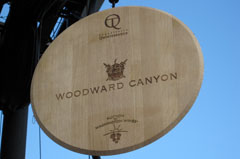 What advice do you have for a woman wanting to get involved in the wine business today?
What advice do you have for a woman wanting to get involved in the wine business today?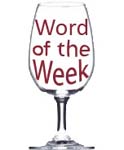 This week’s Wine Word of the Week is vieilles vignes.
This week’s Wine Word of the Week is vieilles vignes.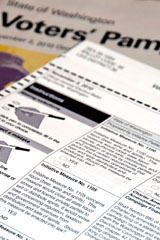 A month ago, I wrote
A month ago, I wrote 







